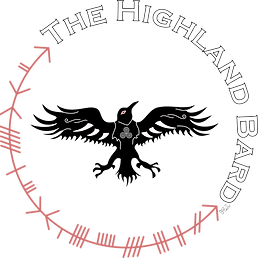The Seven Ill Years, also known as the Seven Lean Years (Scottish Gaelic: seachd bliadhna gorta), is the term used for a period of widespread and prolonged famine in Scotland during the 1690s, named after the Biblical famine in Egypt predicted by Joseph in the Book of Genesis. Estimates suggest between 5 to 15 % of the total Scottish population died of starvation, while in areas like Aberdeenshire death rates may have reached 25%. One reason the shortages of the 1690s are so well remembered is because they were the last of their kind.

Seven Lean Years
Share
As documented in tree ring records, the 1690s was the coldest decade in Scotland for the past 750 years. Failed harvests in 1695, 1696, 1698 and 1699, combined with an economic slump caused by the Nine Years' War, resulted in severe famine and depopulation.
The Old Scottish Poor Law was overwhelmed by the scale of the crisis, although provision in the urban centres of the burghs was probably better than in the countryside. It led to migration between parishes and emigration to England, Europe, the Americas and particularly Ireland. The crisis resulted in the setting up of the Bank of Scotland and the Company of Scotland, whose failure following the Darien scheme increased the pressure for political union with England, finalized in the 1707 Union with England Act.
Before the mid-17th century, difficult terrain, poor roads, and primitive methods of transport meant there was little trade between different areas of Scotland. This became less true after 1660, with the number of rural towns authorised to hold markets increasing from 100 to over 300 by 1707, but surpluses were exported, the most significant being the lucrative cattle trade with England. For various reasons, Scottish agriculture was not as productive as it should have been, a situation which persisted into the first decades of the 18th century.
Most settlements depended for subsistence on what was produced locally, often with very little in reserve in bad years. Most farming was based on the lowland fermtoun or highland Baile, settlements of a handful of families that jointly farmed an area notionally suitable for two or three plough teams. These were allocated in run rigs, of "runs" (furrows) and "rigs" (ridges), to tenant farmers. Those with property rights included husbandmen, lesser landholders, and free tenants, while below them were the cottars, who often shared rights to common pasture, occupied small portions of land and participated in joint farming as hired labour. Farms also might have grass men, who had rights only to grazing. There were also large numbers of casual wage labourers who carried out basic agricultural work. Labourers on fixed incomes, along with pensioners, were particularly vulnerable to the impact of famine, but it also affected those with land, who could not save enough seed for future planting and feed their families. Even pastoral farmers were affected as the price of animal feed became unaffordable.
The closing decade of the seventeenth century brought an end to the generally favourable economic conditions that had dominated since the Restoration of the monarchy in 1660. After 1689, Scottish involvement in the Nine Years' War led to a slump in trade with key markets in the Baltic and France, followed by failed harvests in 1695, 1696, 1698 and 1699. Famine was generally widespread across Scotland from 1694 to 1699, although some regions were affected for shorter periods. However, these followed years of relatively poor harvests in the 1680s, while the impact did not entirely subside until after 1700.
Across Europe, the 1690s marked the low point of the Little Ice Age, a prolonged period of colder and wetter weather that began in 15th century. This lowered the altitude at which crops could be grown and in some years shortened the growing season by up to two months. The massive eruptions of volcanoes at Hekla in Iceland (1693) and Serua (1693) and Aboina (1694) in Indonesia may also have polluted the atmosphere and filtered out large amounts of sunlight.
Source: Wikipedia
